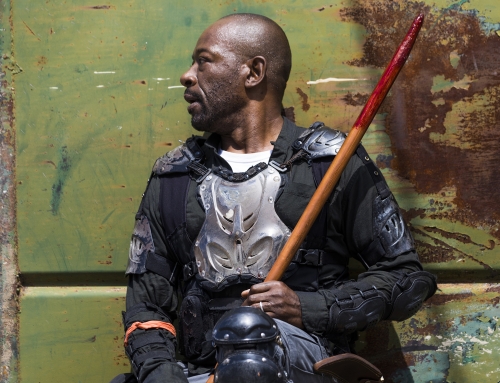The latest Netflix original is a love-letter to 80’s science fiction.
One part period-piece, one part horror, one part science fiction, one part mystery, one part crime drama, and one exceptionally binge-worthy show make Stranger Things the weirdest must-watch television series of the summer. Taking place in 80s small-town America, specifically Indiana, Stranger Things is the story about a young boy who goes missing after a game of Dungeons & Dragons at a friend’s place. When his friends, family, and the sheriff’s department start the search for him they begin to uncover something much stranger about their small town than expected. And with more people disappearing by the day, what really is happening in this town, and who is the child with supernatural powers that has suddenly appeared?


The hardest part with talking about Stranger Things is that there isn’t really a good place to start. The show is dense. There’s so much genre crossover and character building that unpacking the series only leads to more discussion about all of the quirks contained within. The show is often likened to Stephen King novels, E.T., Twin Peaks, X-Files, and various other pieces of content. What’s brilliant about the show is that it is somehow simultaneously all of those things and none of those things. Matt and Ross Duffer, creators of the show, clearly have taken great inspiration from multiple sources by crafting a story that’s familiar yet not all in the same breath.
The show is very much an ensemble cast of characters. There’s Will’s (the boy who goes missing) friend group who remind me very much of Goonies characters. There’s Will’s family including the single-mother archetype, played by Winona Ryder, and the older brother who is the outsider. The town sheriff who is plagued by the memories of his own daughter’s death. The teenage crowd of the cool kids with one of them having a budding romance with the nerdy girl, Nancy, who is also the older sister of one of Will’s friends. And then there’s Eleven and the government scientists conducting bizarre research on her while tapping into something they entirely don’t understand and are trying to cover up.

This collection of characters and what happens to them makes up the stories for Stranger Things. And I say stories because the show is reliant on these sub-plots for progression. It’s weirdly the major flaw and best part about the show at the same time. Each grouping of characters has their own wants and desires, and because these characters are all in the small-town setting their paths cross frequently. So while one sub-plot is happening, it’s also mixing with another sub-plot so that progression and arch can eventually be brought to a dramatic climax.
Each sub-plot also plays to the genre with which you’d be most familiar. The group of boys have a goal, they fight because of one’s romantic-relationship with Eleven, but eventually get back together to accomplish their task. The teenagers have the classic 80s horror tropes of love, sex, getting killed (oh Barb, we hardly knew thee), and then taking a stand against the monster. Even the sheriff who acts as the mystery solving component and delivers the biggest reveals is haunted by his own past attempting to bury it with booze and drugs.

But here’s where it gets interesting: perhaps because each sub-plot crosses over with another there are genre defining changes that take place altering our expected outcomes.
Characters evolve, plots twist in dramatic ways, and threads you thought would lead somewhere don’t but pick up somewhere entirely different. Take for instance Steve, the boyfriend of Nancy, who you spend most of the show generally thinking is awful, but ends up being a really decent, loyal person, who isn’t just interested in Nancy because she’s the nerdy girl he hooked up. He actually cares about her and puts his own life on the line to protect her. Or when you finally come to find out Eleven’s backstory as an experiment to tap into psychic abilities, which you already, but find out she’s also the one who created the bridge between the upside-down world and our world. Or finding out that the thread for the sheriff and why he cares has nothing to do with his daughter dying in some mysterious fashion, he’s just a grieving father whose daughter died of cancer and doesn’t want another parent to suffer the same way he has over these past several years.

All of that’s to say that once you think you have something figured out, the Duffer brothers flip the script and surprise you. Perhaps nothing illustrates that point better than their treatment of the upside-down world, or the world inhabited by our resident murder-feasting monster and also where Will happens to be taken. It’s the weirdest blend of theoretical science that’s hauntingly creepy because it resides just on the outstretch of our own world, similar but different.
For a rundown of the science here’s the Nerdist’s Kyle Hill.
Which is also the best way to describe this show. It’s familiar because it draws from the genres and tropes we’re familiar with, but it’s different. It’s not a show that relies on a single story thread to engage the audience, but a collection of the sum of its parts. It’s how all of these parts come together to tell an exceedingly gripping story that make Stranger Things such a fascinating show to watch, and the perfect show for Netflix’s binge-happy audience.
Josh Rebuck
Latest posts by Josh Rebuck (see all)
- Archived - March 21, 2023
- Archived - January 20, 2023
- Games to Go: Motorsport Manager 2 - July 21, 2017




Leave A Comment